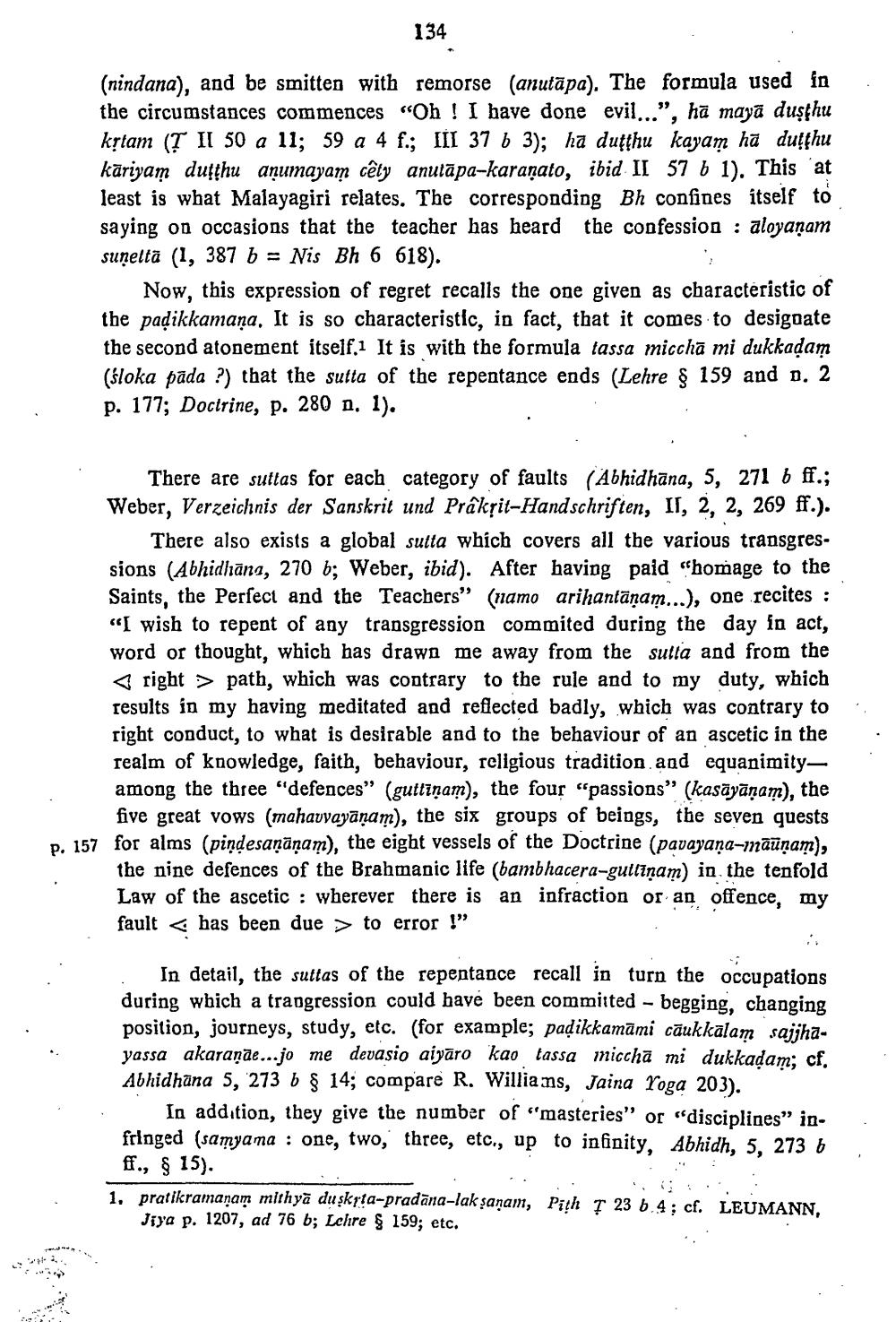________________
134
(nindana), and be smitten with remorse (anutapa). The formula used in the circumstances commences "Oh ! I have done evil...", ha mayā duṣṭhu kṛtam (T II 50 a 11; 59 a 4 f.; III 37 b 3); ha dutthu kayam hā duṭṭhu kariyam dutthu anumayam cêty anutapa-karaṇato, ibid II 57 b 1). This at least is what Malayagiri relates. The corresponding Bh confines itself to saying on occasions that the teacher has heard the confession : aloyaṇam suneltä (1, 387 b = Nis Bh 6 618).
Now, this expression of regret recalls the one given as characteristic of the paḍikkamaṇa. It is so characteristic, in fact, that it comes to designate the second atonement itself. It is with the formula tassa miccha mi dukkaḍam (sloka pada ?) that the sutta of the repentance ends (Lehre § 159 and n. 2 p. 177; Doctrine, p. 280 n. 1).
There are suttas for each category of faults (Abhidhana, 5, 271 b ff.; Weber, Verzeichnis der Sanskrit und Prakṛit-Handschriften, II, 2, 2, 269 ff.).
There also exists a global sutta which covers all the various transgressions (Abhidhana, 270 b; Weber, ibid). After having paid "homage to the Saints, the Perfect and the Teachers" (namo arihantāṇam...), one recites : "I wish to repent of any transgression commited during the day in act, word or thought, which has drawn me away from the sutta and from the <right path, which was contrary to the rule and to my duty, which results in my having meditated and reflected badly, which was contrary to right conduct, to what is desirable and to the behaviour of an ascetic in the realm of knowledge, faith, behaviour, religious tradition and equanimityamong the three "defences" (guttinam), the four "passions" (kasāyāṇam), the five great vows (mahavvayāṇam), the six groups of beings, the seven quests p. 157 for alms (pindesaṇānam), the eight vessels of the Doctrine (pavayaṇa-māūṇam),
the nine defences of the Brahmanic life (bambhacera-gullinam) in the tenfold Law of the ascetic: wherever there is an infraction or an offence, my fault has been due to error !"
In detail, the suttas of the repentance recall in turn the occupations during which a trangression could have been committed - begging, changing position, journeys, study, etc. (for example; paḍikkamāmi cāukkālam sajjhayassa akaraṇae...jo me devasio aiyāro kao tassa miccha mi dukkaḍam; cf. Abhidhana 5, 273 b § 14; compare R. Williams, Jaina Yoga 203).
In addition, they give the number of "masteries" or "disciplines" infringed (samyama: one, two, three, etc., up to infinity, Abhidh, 5, 273 b ff., § 15).
1. pratikramaṇam mithya duşkṛta-pradāna-lakṣaṇam, Pith T 23 b.4; cf. LEUMANN, Jiya p. 1207, ad 76 b; Lehre § 159; etc.




